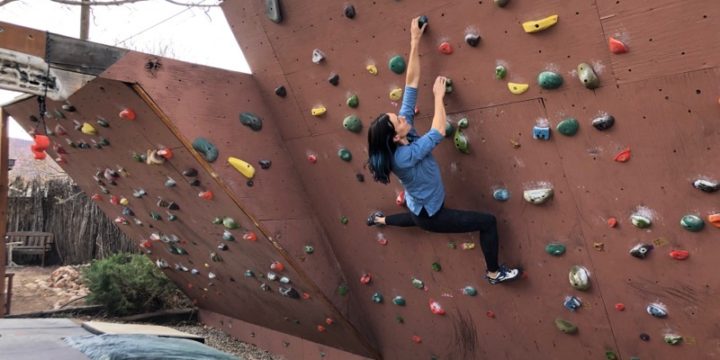
Building a Backyard Climbing Wall
Hi Steph,
Relating to your backyard climbing wall that you have posted about in the past I have a few questions. In these hectic times of quarantine I am going to attempt a climbing wall of my own and want to emulate something similar to yours, specifically two walls at different angles with a beam at the center. What is the height of your wall? How big are the vertical posts supporting the beam? And what have you done with the back of the walls to protect it from weather? I hope all is well and you are able to stay safe in these hectic times. Thank you!
Brandon
Hi Brandon,
Perfect time for a wall project! Noah Bigwood built my wall about 20 years ago, and none of us really thought it would last for so long–I think it’s inherently a solid design. At the time I was trying to save as much money as possible and didn’t imagine this would live to be a multi-decade installation, and it was all done pretty bare bones. In retrospect, it would have been a good idea to put some brick or cement below the kickboard–the wood is directly on dirt. If I were to do it again, I would definitely put something there. (Probably the Moab climate has been helpful with the longevity, it might not have worked out so well in a different environment.)
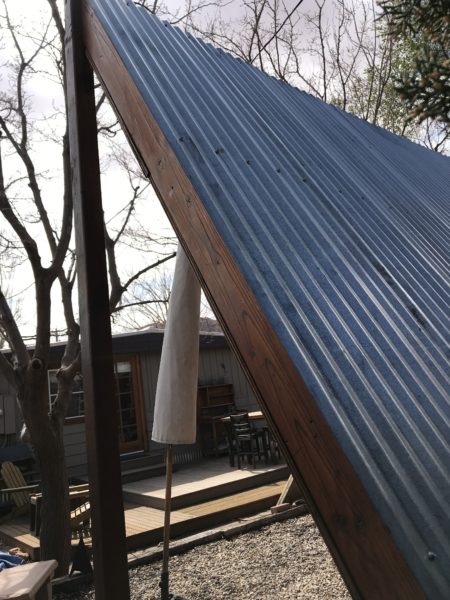
We did put corrugated metal on the back which has also helped with longevity. The downside of that is I’ve had a few bad t-nuts, and it seems like too much of a hassle to pull off the metal and replace them.
Painting the plywood has definitely helped with sun degradation. About 5 years ago, I stripped all the holds off and gave it a new coat of paint.
Both sides of my wall are panels that are 12 feet wide and 12 feet in length (so you’re not 12 feet off the deck because of the steepness), with a 12″ kickboard. The framing for the wall panels is 2×6. The gravel under the wall is angled up, so it’s only an inch deep at the kickboard and 18″ deep at the back, which is really nice because it reduces some of the fall distance when you’re higher on the wall. Bringing tons of gravel in with a wheelbarrow was a pretty massive project, and if we ever want to get rid of it, it’s going to be a pretty massive project in reverse. For the first several years, I just had old mattresses under it, which was not nearly as nice, but it worked.
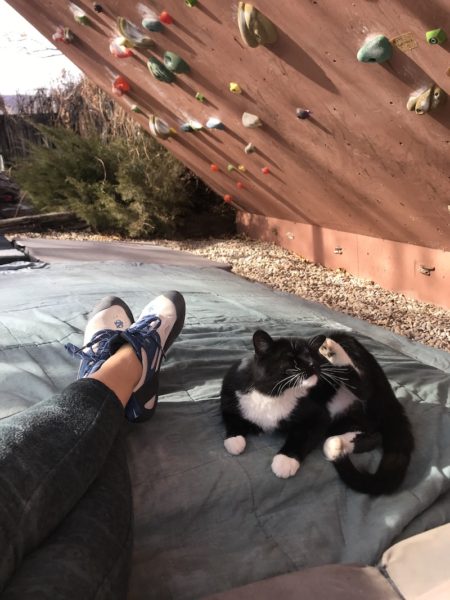
Recently I decided I really want a moonboard and was pretty sad to discover that both angles of the wall are 5 degrees steeper than the two moonboard angles, because I was hoping to just convert it. So my suggestion to you would be to build your wall with one side 40 degrees and one side 25 degrees. Then if you decide to turn it into a moonboard, you are halfway there.
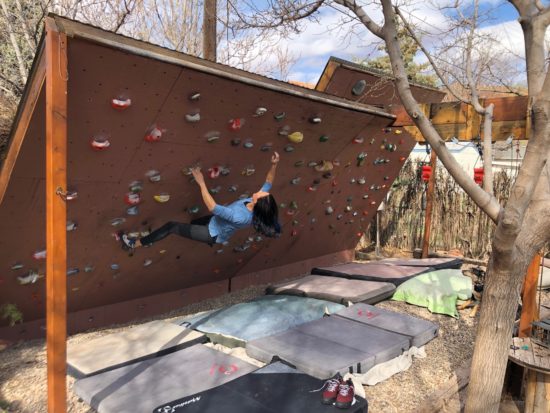
The central beam is the really important part of the design structurally, and the idea was to make sure it’s not right next to you when climbing on the wall.
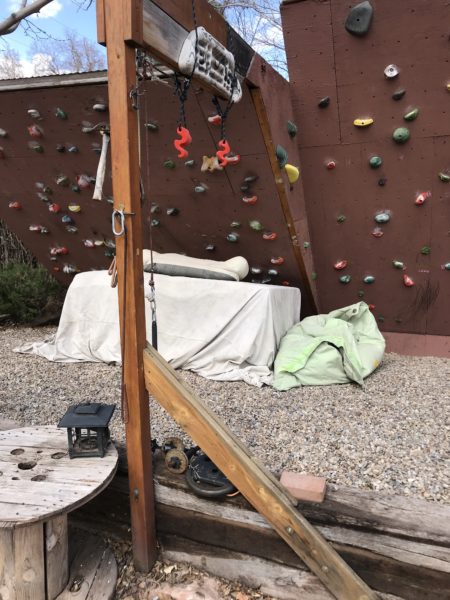
By extending that beam out to the middle 4×4 post, Noah was able to get the post a little over 5′ back from the top of the 45 degree wall. We added the 2×6 angled braces you can see in this picture about 10 years ago, and those are bolted into the railroad ties. But the 4×4 did fine on its own for a decade.
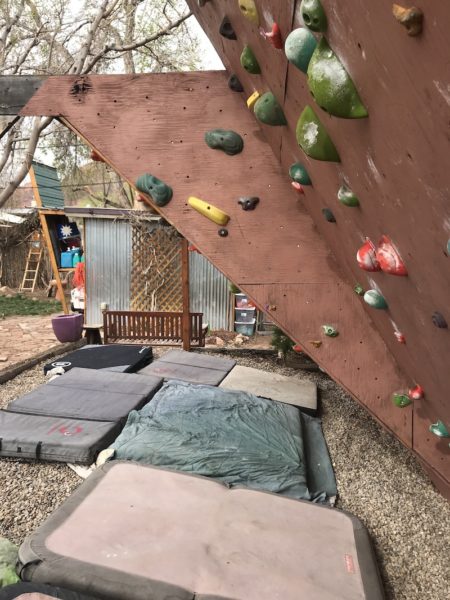
The extension of the central support post is a super nice feature, and makes the wall much more useable as a traverse wall.
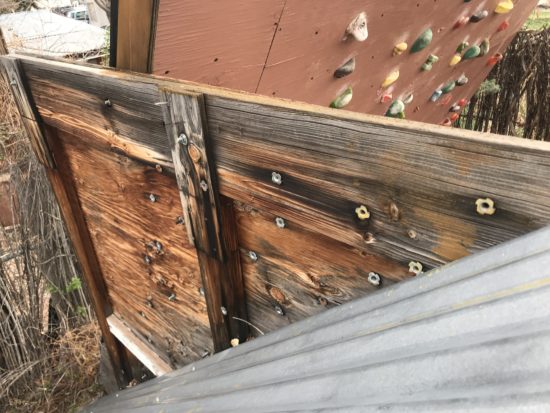
The central beam is a 2×10 and it’s 12 feet long total, and it extends out to the back of the wall, supporting the panel of the triangular sidewall between the main walls, and also extends that extra 5′ out to the front of the wall.
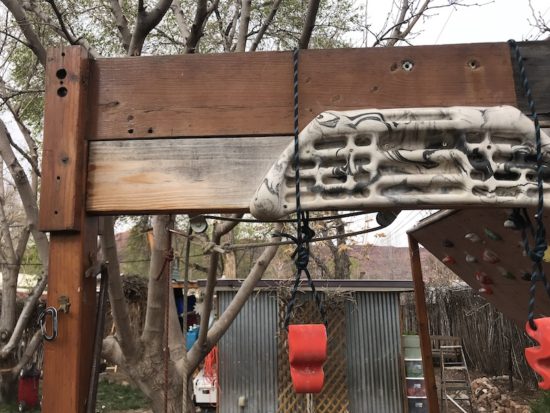
The central beam also turned out quite handy to put a hangboard on and for a pulley system for taking off weight while hangboarding–we added the little bit of extra framing so the hangboard could be lower because I’m short.
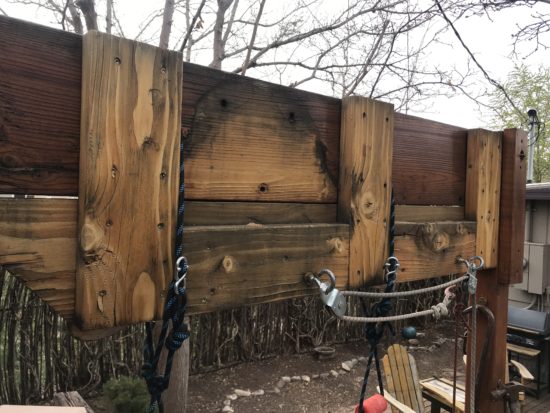
The vertical posts on both ends are 4x4s too. The left post, the one next to the 45 degree wall, is 9.5′ in height.
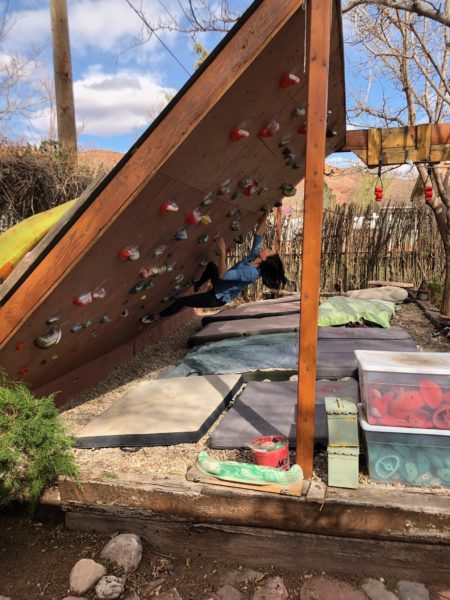
The right post, the one next to the 30 degree wall, is 12′ in height.
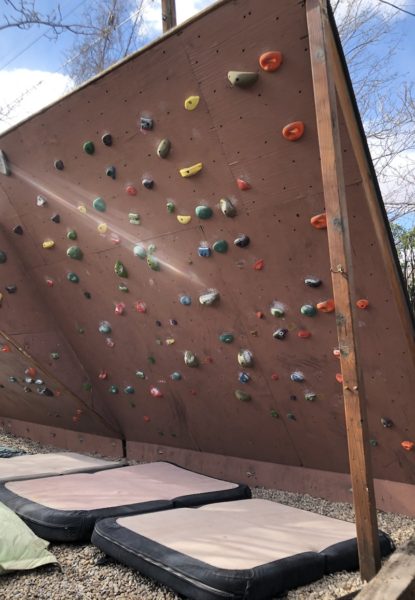
This wall has been pretty awesome for a long time: I think the design is fundamentally really good and it’s definitely outlived anyone’s expectations! If you do build outside, consider weather issues both for the wall and for climbing use: think about sun and shade and which aspect the wall will face, and the possibilities of adding some sort of rain cover or shade cover if you’ll need to. My wall is south facing, so it’s great for winter, not so great in the hot season. I planted two shade trees right outside the railroad tie enclosure about ten years ago, and they have grown up pretty big and provide a lot of shade as spring comes which allows me to use the wall a little later in the season (I really don’t use it at all in summer because Moab is just too hot, and it’s south facing, and that’s the time of year to be climbing in other places anyway). Trees are perfect because they shade the wall in the warm season, but lose all their leaves and allow for full sun in the cold season. I always think about installing misters around the wall to push the season a little more, but haven’t gotten around to it yet.
I hope this helps, and good luck with your wall!
Steph







